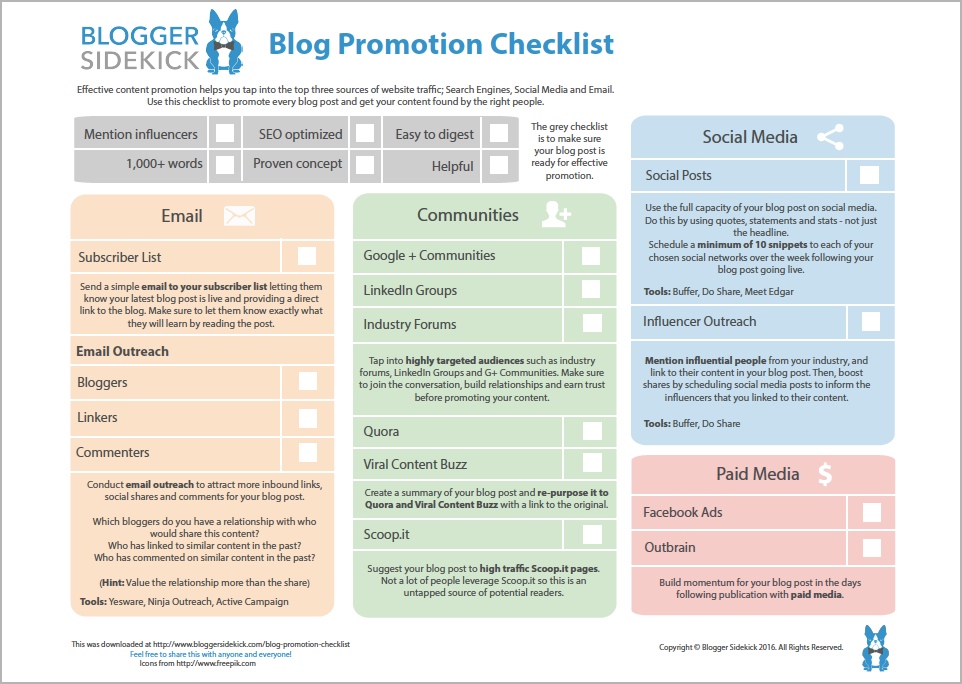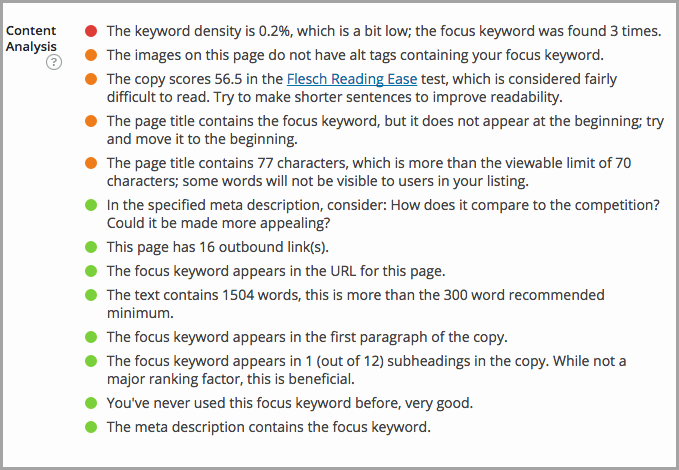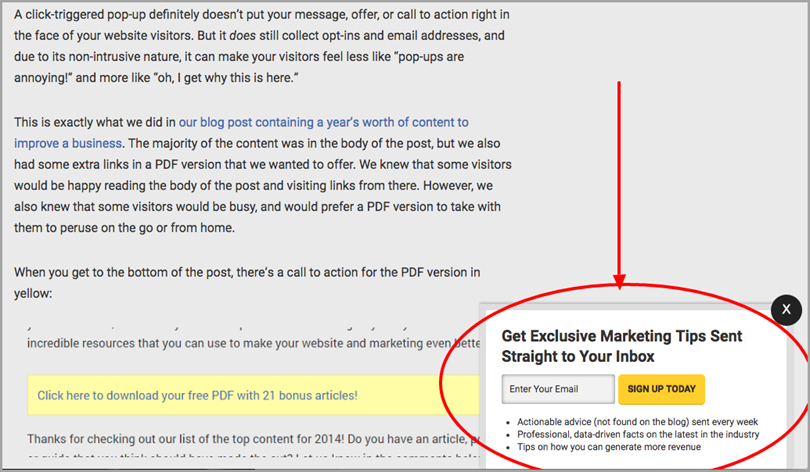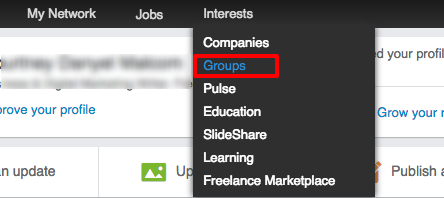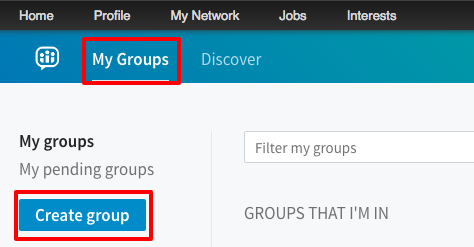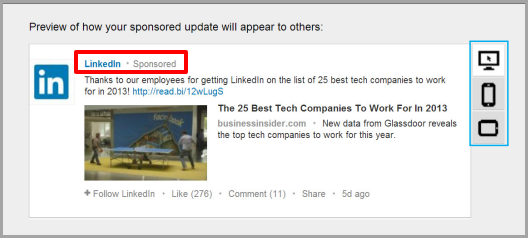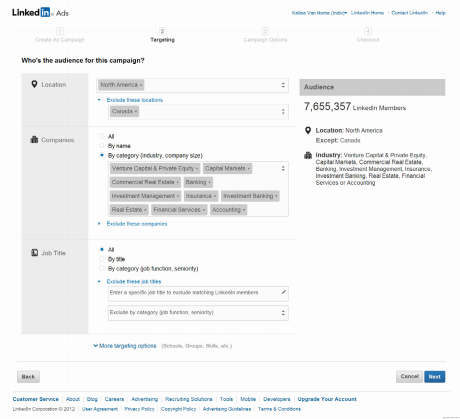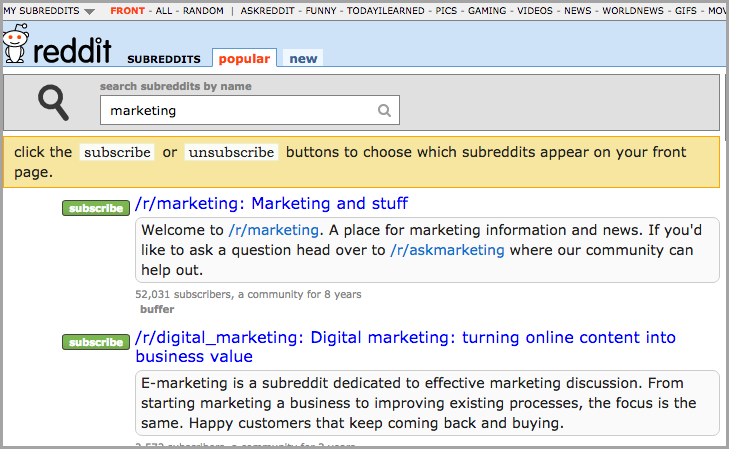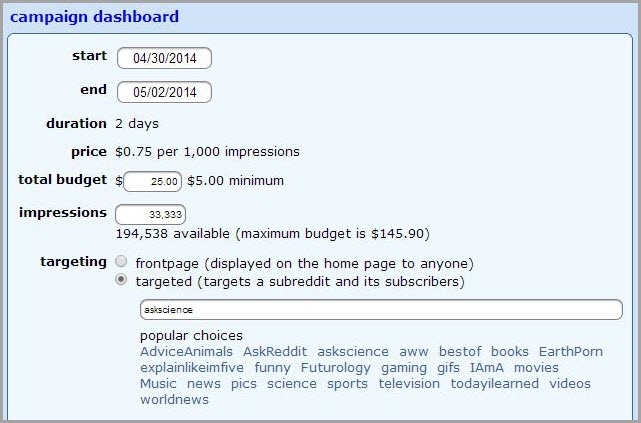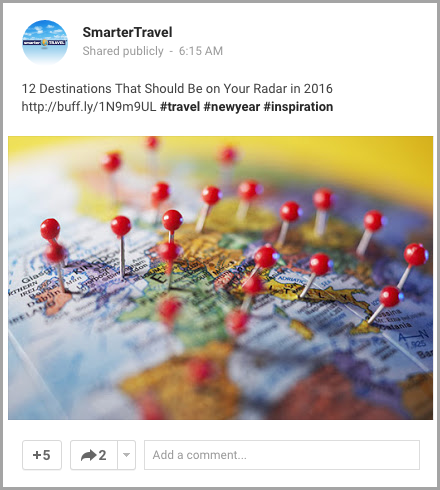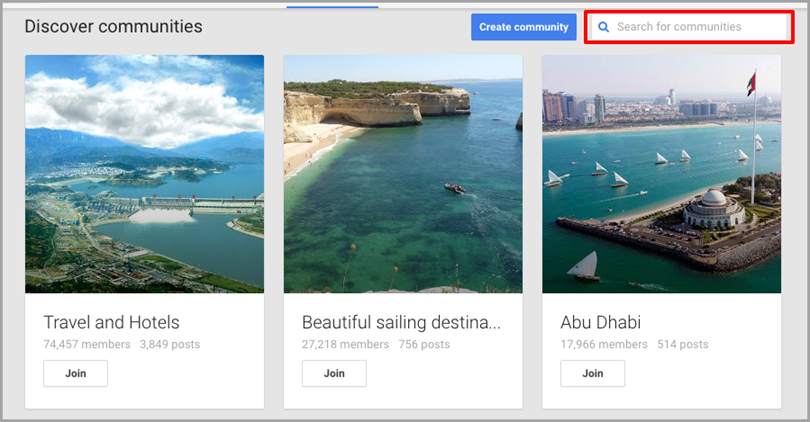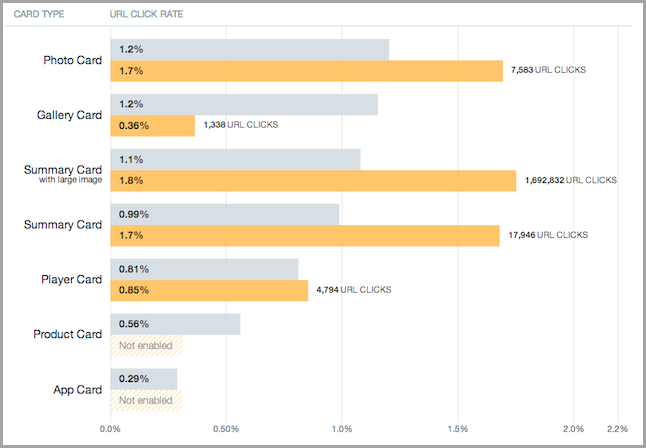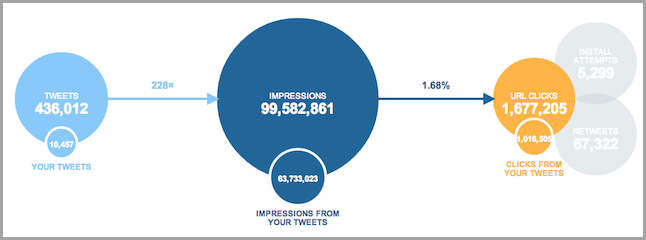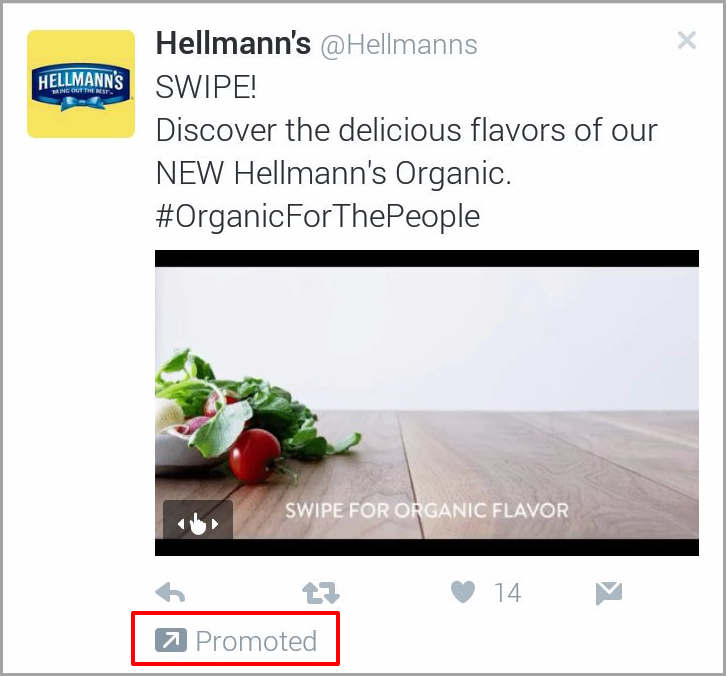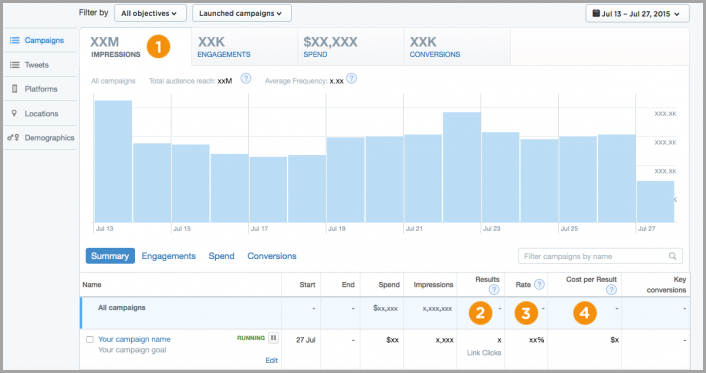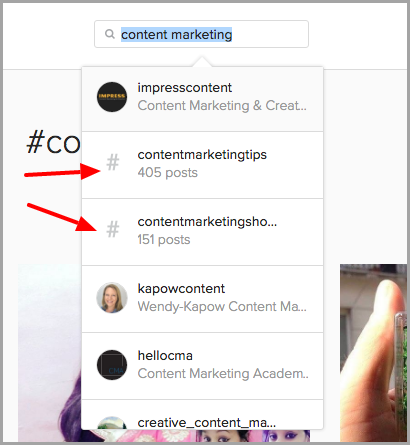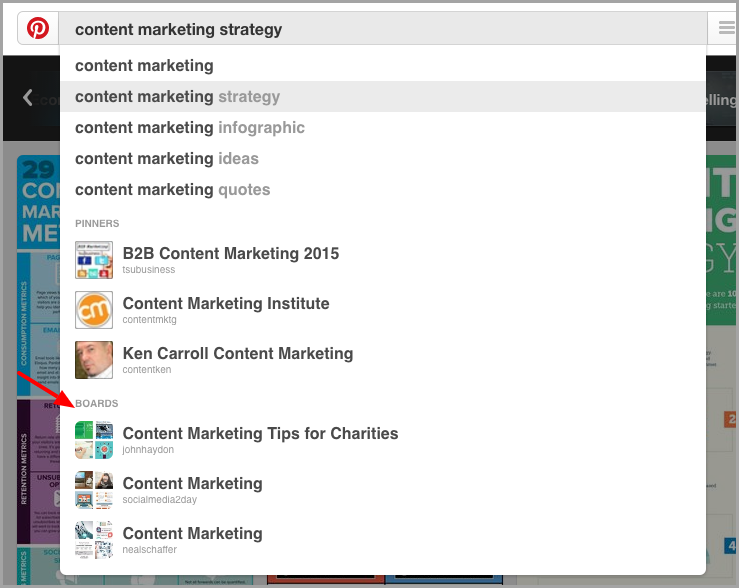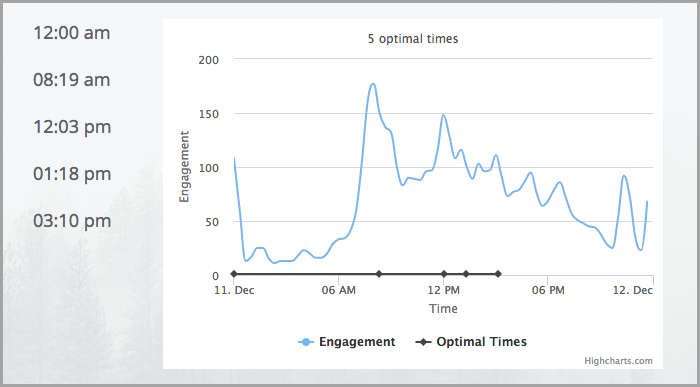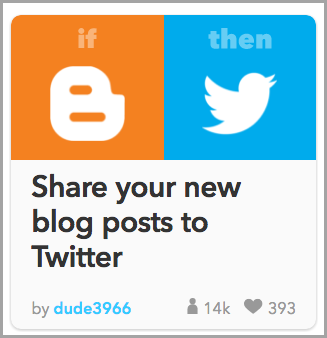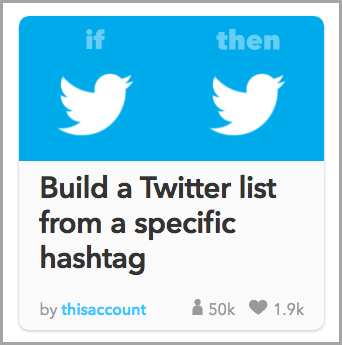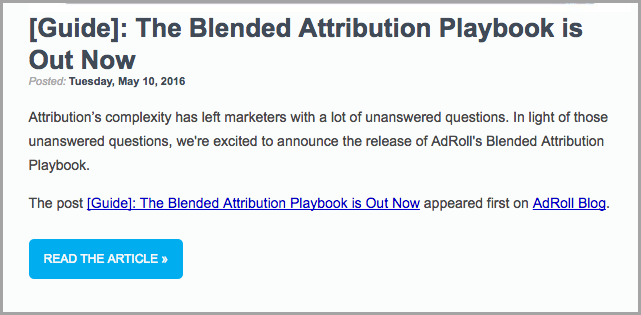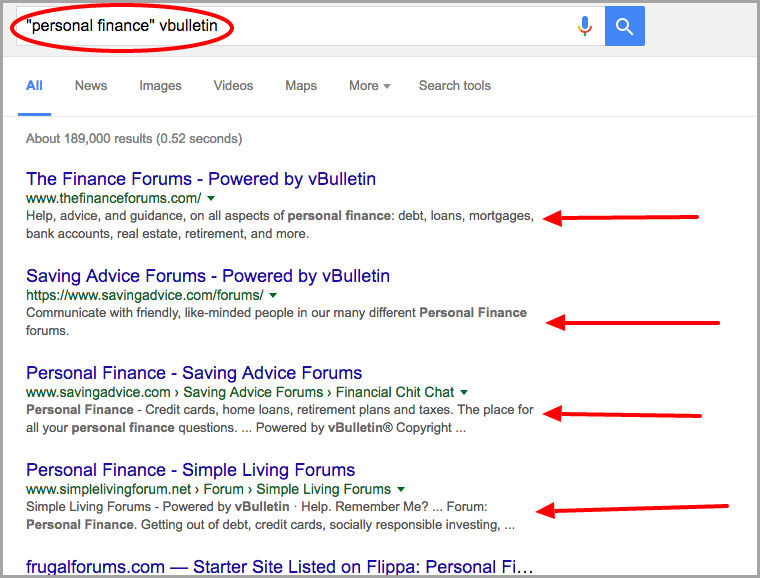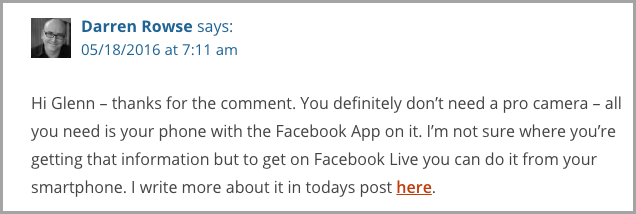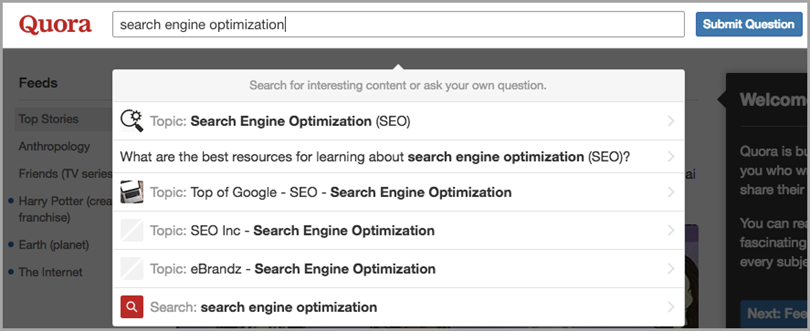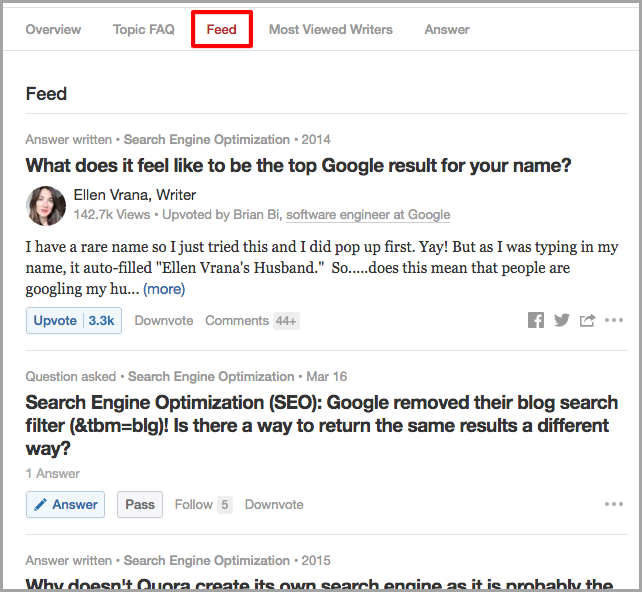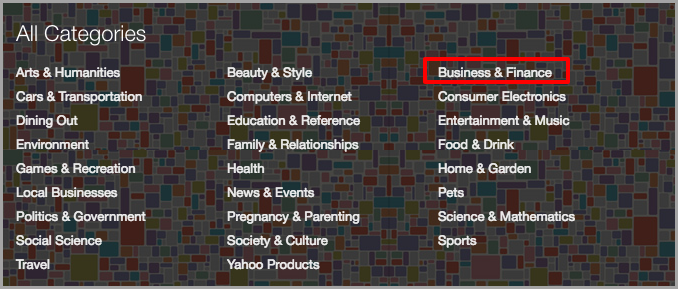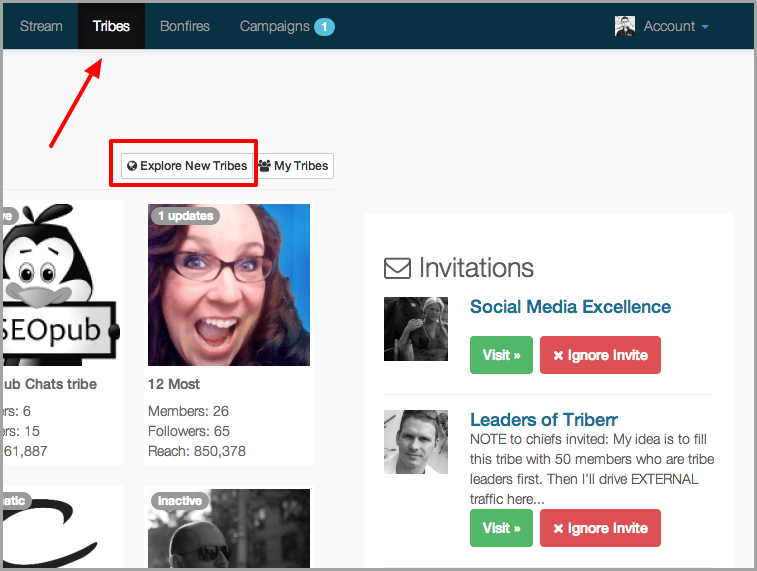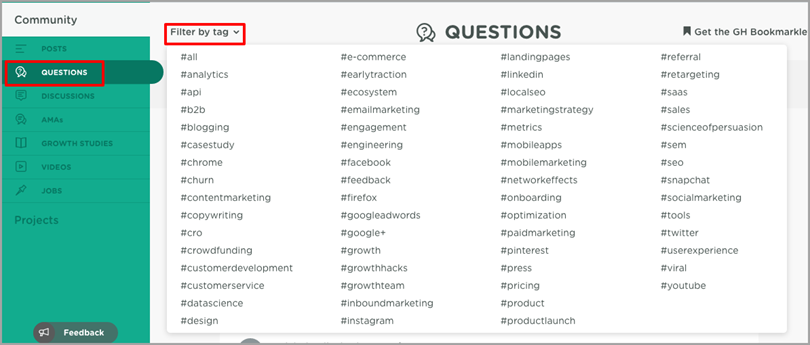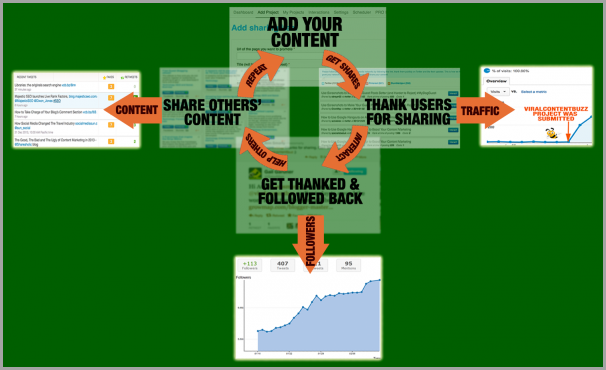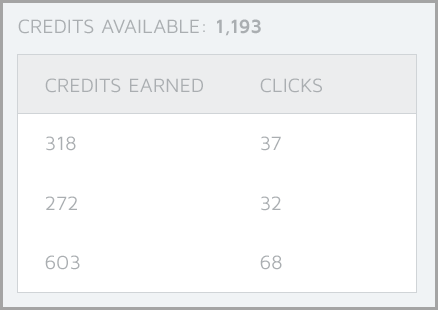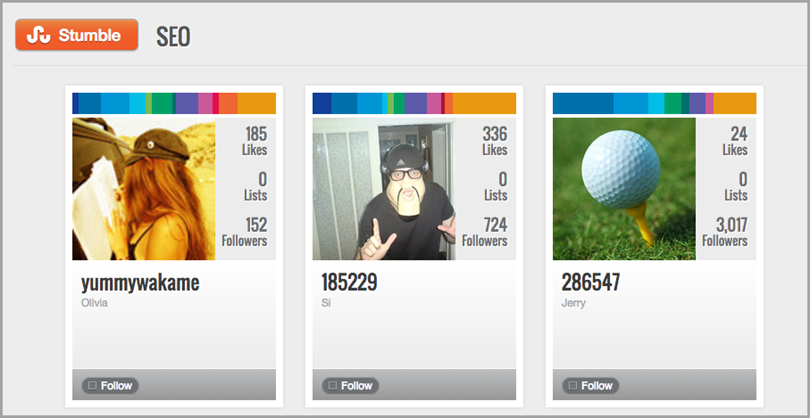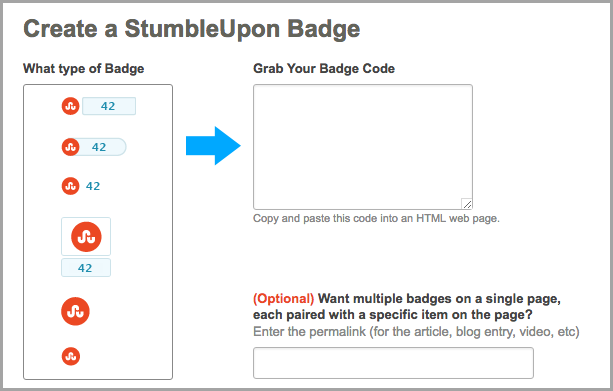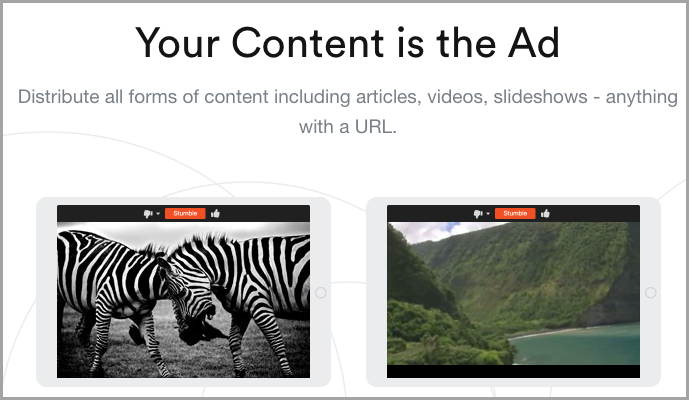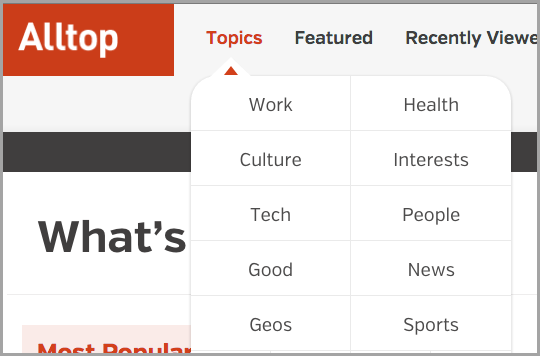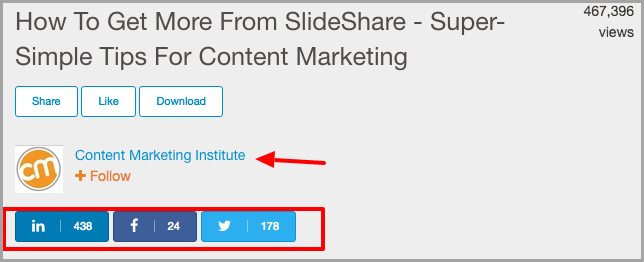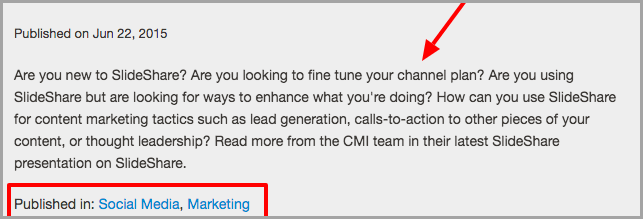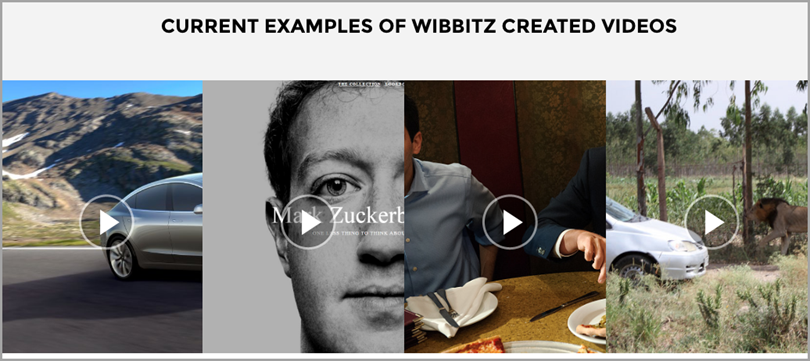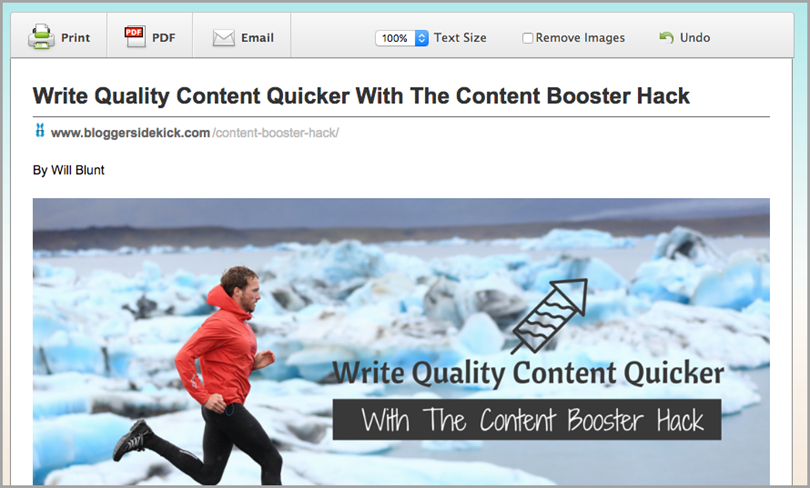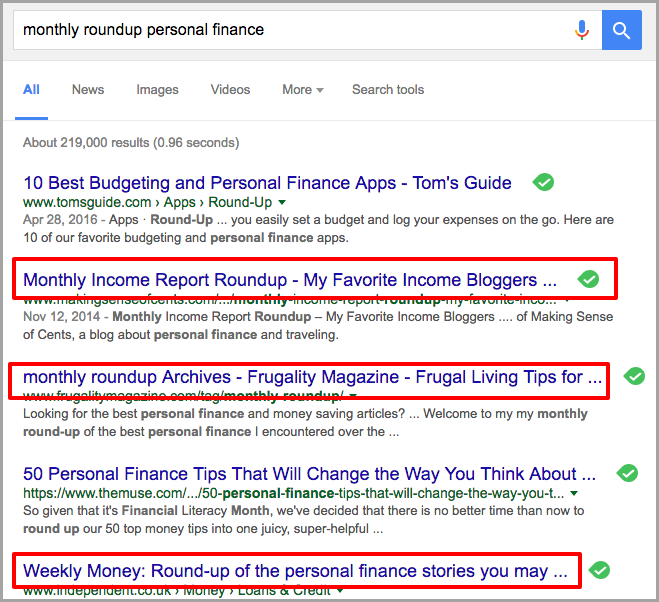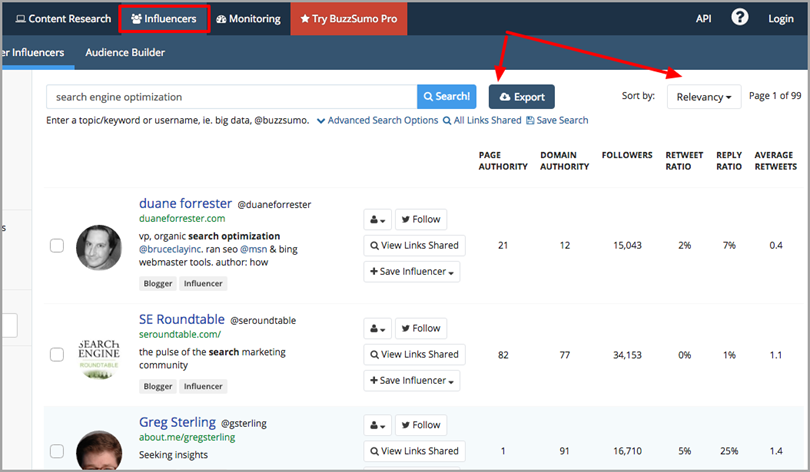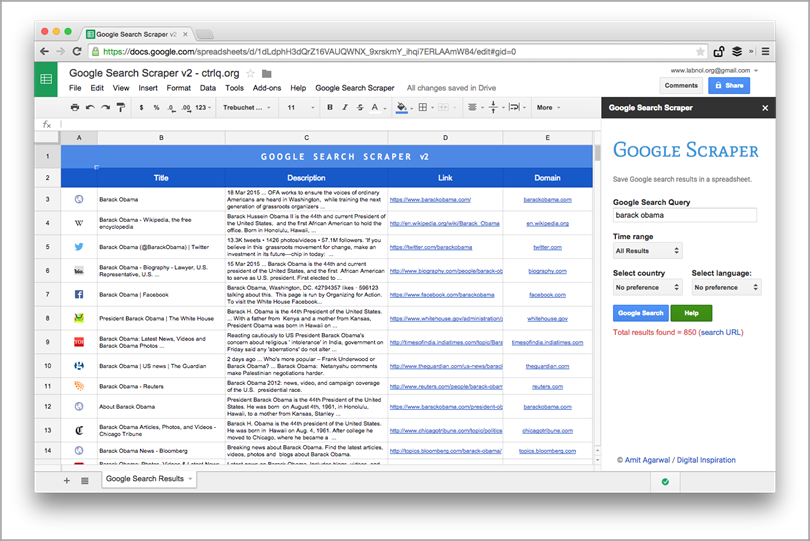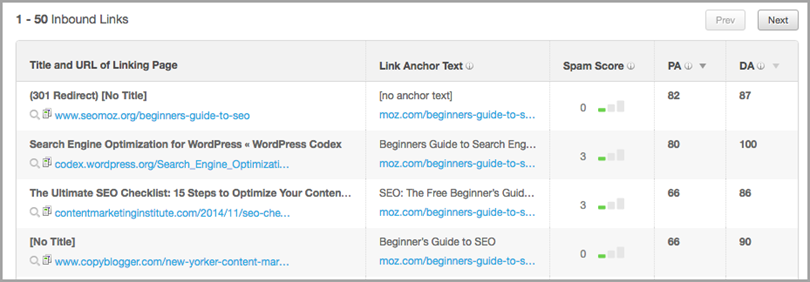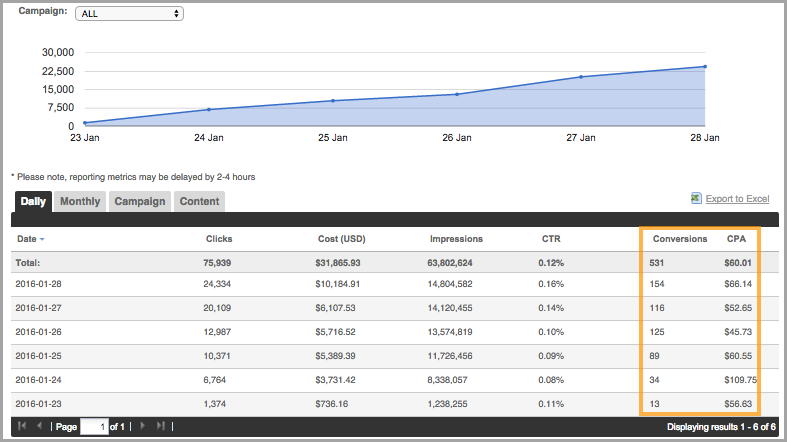

Do you know exactly how to promote your blog posts effectively? Or are you swinging for the fences?
If you only focus on creating high-quality content, you’re wasting your time.
And it’s not like this is a new phenomenon, but I need to reiterate the importance of content promotion for anyone that wants to make a splash in today’s content jungle.
It still amazes me how many blogs, businesses and digital marketers get it wrong. Or simply ignore it’s value.
It’s not your fault… You see the 2% of blogs out there that get a thousand likes as soon as they hit publish, and you imagine one day of achieving the same thing yourself.
Unfortunately your reality is something quite different.
Instead of marvelling at your traffic, shares and comment numbers; you are stuck scrambling to get your next blog post up and scratching your head at the measly results you see on the front end.
The world of internet marketers who promised you BIG traffic numbers that would all come easily with a few social shares were wrong.
It doesn’t come easily. (Maybe it did 15 years ago, but not today)
A few Tweets and a couple of emails won’t get you any traction like they used to. Your audience is suffering from content shock and to breakdown that barrier you need to HUSTLE.
The results may look fancy, all those nasty vanity metrics like social shares and positive comments. But content promotion has a dark reality – it’s a grind. There is nothing in the slightest flattering about it.
If you want your blog to get noticed you need to hustle, hustle, hustle… And then when you think you’ve done enough, you need to hustle a little bit more.
Someone once asked me how I got so many social shares on my blog posts, and my answer was simple:
My team and I dedicate a whole day to promoting each post.
Once they heard the work that was required to get results, they were much less interested in making it happen.
There’s no trickery. No magic. No “inner circle”.
It’s just flat out hard work.
How about you, are you willing to dedicate those sort of man hours into getting results?
If you are, you’re in the right place. Over the years I’ve tried just about every tactic there is for promoting a blog post. And today I’ve collated them all into one big list.
Should you use all of these tactics every time you hit publish? Absolutely not.
But if you want to see genuine results from your content marketing efforts you will need to test, try, experiment and innovate with a big selection of these. Then pick the combination that works best for you.
Let’s get started…
Note: This is a long article, if I was you I would skim through the headings and dive deeper on the tactics that jump out at you. But it’s up to you 🙂
Before you promote
This is perhaps the most important step in the journey.
Before you should even consider promoting your content, you need to make sure it’s worthy of promotion.
What makes your content worth sharing?
Here is a quick checklist;
- You mention influencers
- You nail the headline
- It’s at least 1,000 words long
- You’ve written about a topic that is PROVEN to perform well
- Your content is easy to digest – it uses headings, sub-headings, dot points and formatting
- You pack it full of visuals – screenshots, graphics, videos, presentations… Anything that increases engagement
- Your blog post introduction is compelling
- It’s personal, emotive and tells a story
If you can tick off all of those points, then you’re ready to get promoting.
On your website
Before anything else, there’s a lot you can do on your own website and within your content to promote your blog.
For example, SEO optimization is a key ingredient in a well promoted blog. In fact, 60% of companies say their content and SEO strategies are integrated.
Here are some on-site tactics for how to promote your blog effectively:
1. Keyword optimization
As basic as SEO comes, you need to focus on finding appropriate keywords and optimizing your content for those keywords.
You can optimize your on-page content by including keywords in these areas:
- Headline
- Body text (preferably the first 100 words)
- URL slug
- Meta description
- Header tags
- Image alt tag descriptions
You don’t have to learn SEO best practices to do this well. Just use a plugin like Yoast, and it will tell you exactly what your content needs for keyword optimization.
Image Source: Yoast SEO
For more information on how to optimize your content using keywords, this article from HubSpot is worth a read:
2. Crosslinking
Another good SEO practice is linking between posts or pages on your site, and vice versa.
This encourages visitors to click through to other content, and decreases your bounce rate, a major search engine ranking factor.
Google also uses the anchor text to understand what your content is about. So including relevant keywords here can help with SEO as well.
When it comes to using this tactic to promote a blog post, after you hit publish, go into some older blog posts or pages that already get a lot of consistent traffic and link to this new post.
Like this:
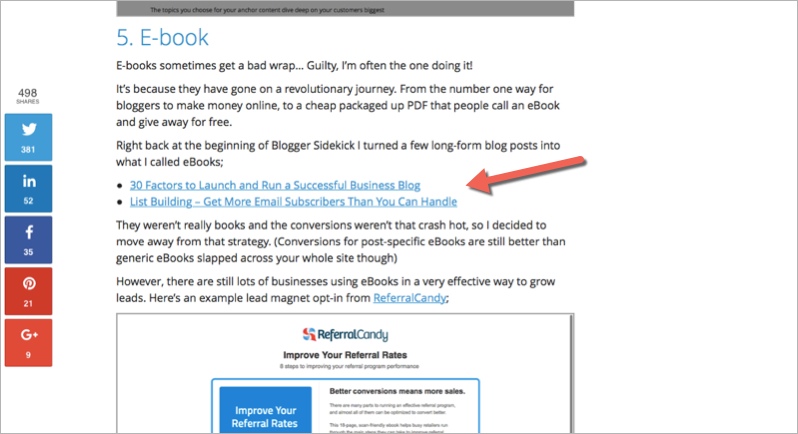
3. Popups
Popups are typically used to capture someone’s email address and offer them a lead magnet in return. However, if you want to draw attention to a specific piece of content on your blog, then you can use a popup to make sure all your website visitors see it.
For example there are a bunch of popup WordPress plugins that will help guide your visitors to the pages you want them to see.
Popups can be intrusive and sometimes annoy visitors, so if you’re worried about that for your blog, then try a “pop-in” instead.
These just cover a small portion of the screen and do little to disrupt the user experience.
Image Source: WebpageFx
Another less intrusive option, that I have found to be very effective, is to time your popups based on how long someone has been on your site.
4. Social sharing plugins
Social sharing plugins are a necessary element for your blog if you want to increase reach and get more people seeing your content.
There are tons of plugins out there you can use to create these for your blog, but we choose to use Social Warfare here at Blogger Sidekick.
With Social Warfare you can customize exactly where your share buttons appear, which buttons you show, as well as a bunch of other things right from within WordPress.
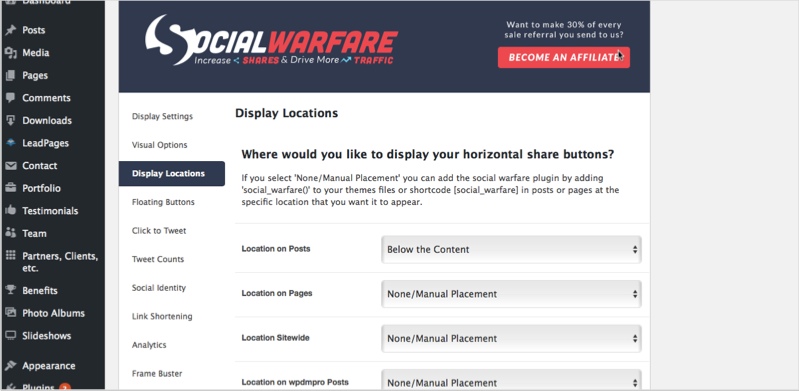
It’s also unique compared to other sharing plugins because it integrates properly with Twitter shares, something that most plugins can’t do any more.
For more info on WordPress social sharing plugins, check out this article from Blogging Wizard: 10 Best Social Sharing Plugins For WordPress in 2016
5. Click to Tweet
Another way to encourage social sharing of your content is to use a tool like Click to Tweet.
Click to Tweet allows you to create clickable links or embedded quotes in your blog posts that quickly and easily turn into a social share for visitors.
Here is an example of me using it here on Blogger Sidekick:
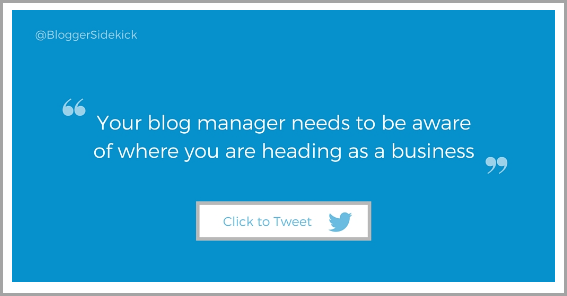
When someone clicks on this image, it sends them right to a pre-made tweet:
If you want to get in on this promotion tactic, just install the plugin on your site, and then you can easily generate “click to tweet” buttons for memorable quotes from your post. Alternatively you can create standalone links if you don’t want to install the plugin, using the “Basic Link” function on their website.
For more on how to use Click to Tweet, this article from Blog Tyrant is a gem: How to Add a “Click to Tweet” Link to Quotes Within Your Posts
6. SumoMe image sharer
SumoMe Image Sharer can drive more traffic to your site by making it simpler than ever for visitors to share images from your post.
Image Source: SumoMe
Simply add the plugin to your blog and choose which social platforms the images can be shared on.
The cool thing is you can actually use this tool for free if you are happy to put up with SumoMe’s branding on the shares.
Social Media
Next in the list we have social media promotion.
This is where most people spend a lot of time promoting their blog posts, and it’s for good reason. With over 60% of adults using social media sites, there is a significant chance your ideal customers will be present on at least one of these platforms.
Here are some social media tactics for how to promote your blog:
Every second there are 20,000 people on Facebook… So you really can’t pass up this promotion tactic.
I recommend using a social media scheduling tool like Buffer to optimize your Facebook post scheduling, but here are some more specific tactics on what and where to share on Facebook.
7. Facebook Business Page
If your business has a Facebook page, be sure to share your latest blog post there…
All it needs is an engaging image, a brief introduction to your post and some relevant hashtags.
Here is an example from Moz:

Image Source: Moz Facebook
You can go to the “Insights” tab on your business page to see how different posts are faring, and start to optimize them for your ideal audience.
8. Facebook Groups
Another way to get your blog content seen on Facebook is to share it with audiences that are likely to find it valuable.
It’s really easy to discover and browse groups in the “Groups” area of your Facebook account.
Once you find relevant groups, it’s essential that you interact and engage with the members before offering any self-promotion.
9. Paid promotion on Facebook
Facebook ads are a great way to get more people seeing your content, but only if you know how to optimize them.
You can quickly burn through your budget if you go at it recklessly.
For example, when it comes to promoting your blog content and getting more people back to your website, many people will automatically think that “Boosting” a Facebook post is the best option.
What I’ve found is that boosting posts is great for Facebook page visits, likes, comments and engagement WITHIN the social network. But if you want to get people off Facebook and onto your website your best bet is to create an ad and optimize it for “Clicks to website”.
Here are a couple of quick tips for running a killer Facebook campaign for a blog post:
- Optimize for “Clicks to website”
- Run the ad for about 10 days following publication to gain immediate momentum for the post
- Use Canva to create a nice looking, Facebook-compliant image
- Target your ads based on interests, rather than demographics
- Show your ads on the “Audience Network” rather than the “Desktop Newsfeed” or “Right Column” – this is a specific hack for content promotion that will get you the lowest cost per click
- Use a simple formula for your ad such as: Question, Image, Headline, Call-to-action
Here is an example of an ad we have run for a blog post on Facebook:

If you’re targeting business professionals, LinkedIn is a great social platform to promote your post.
To get the best engagement try and post on weekdays between 7:30 to 9:00AM and between 5:00 and 6:00 PM, when people are either just starting work, or finishing their day.
Given the audience, posts that relate to case studies, success stories and skill acquisition perform well, as well as industry insights and trends.
Just don’t expect huge traffic immediately from your efforts. LinkedIn promotion is a long-term tactic, and it’s predominantly about building authority and trust with your audience.
10. LinkedIn Company Page
If you haven’t already, you should set up a company page on LinkedIn where you can share your content once you’ve hit publish.
On company page’s you can track engagement with your posts, follower growth, and other data to optimize your content.
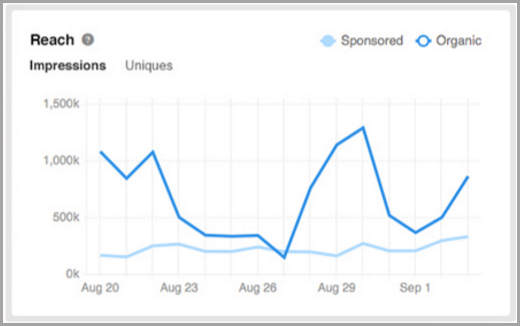
Image Source: LinkedIn
11. LinkedIn Groups
If you’re a member of some LinkedIn groups related to your niche, they can be another great place to promote your blog content. But you need to do it subtly.
If you just waltz into a group and start spamming it with your content, everyone will just get downright irritated.
You could also create your own group where you ask questions and get feedback to inspire future posts, priming the group for promotion at a later date.
To find groups in your industry, go to “Interests”, and click on “Groups”.
If you want to kickstart your own group, click “Create Group” under the “My Groups” tab.
Image Sources: LinkedIn
Forbes have a cool guide on LinkedIn Groups here: The Definitive Guide to LinkedIn Groups for Marketing
12. Sponsored posts on LinkedIn
If you want to pay to play, you can benefit by micro-targeting a specific audience with posts you’ve published on LinkedIn.
You have to have a LinkedIn Company Page and a Business Account to access this feature. But once that is set up just go to the Campaign Manager homepage and click “Create new campaign”.
From there, choose “Sponsor an update” and click “Next”. Then you can set up your campaign specifics and preview how the post will look.
Once you are happy with the basic campaign setup, you’ll be taken to targeting where you can specify audience demographics and other valuable targeting information.
Image Sources: LinkedIn
Reddit calls itself the homepage of the internet. Research says that users cast nearly 40,000,000 votes on the site every month.
13. Subreddits
To promote your blog content, look for subreddits that target your niche by using your keyword in the Subreddit Search.
Image Source: Reddit
Also be on the lookout for broader traffic-getting subreddit categories that your content might be relevant to, for example:
For more information on promoting your content on Reddit, check out this article from KISSMetrics: The Marketer’s Guide to Reddit
14. Reddit ads
You can create your own sponsored links to appear on Reddit and send traffic back to content or your website.
There’s a flat rate of $0.75 per impression for self serve advertising, and a minimum buy of $5 for any link.
But you can control your spending and target very specific audiences, which makes it an intriguing alternative to other advertising platforms.
Image Sources: Reddit
Nate Shivar wrote an article about advertising on Reddit if you want some more info: How to Advertise on Reddit: My Experience & 9 Ideas for Advertising on Reddit
Google Plus
Google+ is a somewhat under-utilized social platform for many marketers because everyone thinks it’s on the way out…
Personally, I believe it has lost it’s sting as a content promotion platform. But in saying that, there are still pockets on the network with a LOT of engagement, you just need to find them.
15. Google Plus Profiles and Pages
You can share your post with your Google+ Circles by posting to your profile page. But make sure whatever you’re posting is shared publically to get more reach.
To get more exposure, use hashtags so people outside of your circles can find the content as well.
16. Google+ Communities
If you are going to use Google+ for blog promotion, this is how you should do it. It has more than 150,000 communities, across just about any niche or industry you can think of.
To find them, in your Google+ account click “Home” and then “Communities”. You can browse around recommended communities, search for one with the search bar, or create your own.
Consider joining some relevant ones, engaging with their members and enabling yourself to share content with the. Communities use sub categories to organize posts, so select the ones that your post is most relevant for.
I wrote a Google+ guide for Bluewire Media that adds to this section: Why Google+ Sucks for Almost Everyone
Ohhh Twitter… I have a love-hate relationship with this platform.
It’s AMAZING for connecting with new people, contacting influencers and rapidly building a brand for your business. But it’s also jam packed with vanity, empty shares and automated messages.
Either way, it’s most likely going to be an important part of your blog promotion efforts.
17. Twitter profile
Sharing your latest blog post on your personal and business Twitter profile is a great place to start.
But don’t just schedule one share and stop there… Get the most out of all that effort you put into creating the blog post by sharing it multiple times. (Twitter shares have a pretty short lifespan anyway)
This is the combination of shares we use for our content on Twitter:
- At the time of the post (Headline Variation 1 + Post Image 1 + Link + Hashtags)
- 3 hours after the post (Headline Variation 1 + Post Image 2 + Link + Hashtags)
- 6 hours after the post (Headline Variation 1 + Post Image 3 + Link + Hashtags)
- 1 day after the post (Headline Variation 2 + Post Image 1 + Link + Hashtags)
- 2 days after the post (Headline Variation 2 + Post Image 2 + Link + Hashtags)
- 4 days after the post (Headline Variation 2 + Post Image 3 + Link + Hashtags)
- Evergreen automated schedule (Best performing headline and image combination)
One example of a headline variation may actually be a quote from within your blog post, like this one from Alexander James:
Also, Tweets with images get 5x more engagement, which is why you should include a series of relevant images with your shares.
18. Twitter chats
Twitter chats are when a group of Twitter users meet up at a certain time to discuss a topic, using a designated hashtag.
If you find a Twitter chat related to your industry, it can be a great way to get exposure for your latest blog post.
Here are a few places to find Twitter chats:
SEMrush is a company who nails Twitter chats and uses them really well to promote their brand and content:
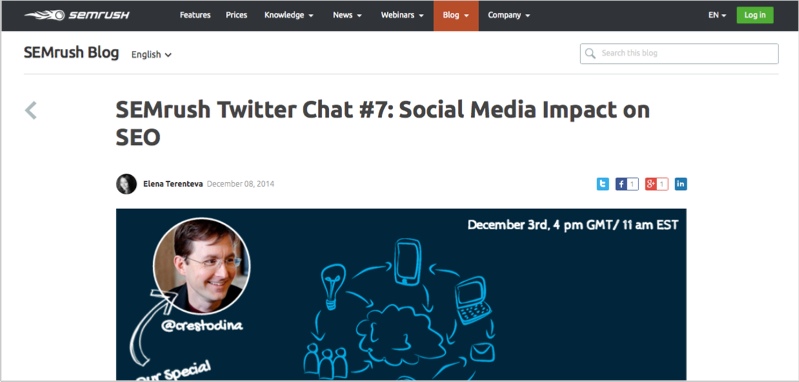
19. Twitter cards
Twitter Cards take your traditional 140-character tweet to the next level by allowing you to include images, videos, audio and download links. It’s highly recommended that you use them to grab attention for your blog post.
Whilst they can be a bit complicated to set up, if you have WordPress there are plugins such as Social Warfare that make it much easier.
There are five types of Twitter cards:
- Summary Card
- Summary Card With Large Image
- App Card
- Player Card
- Lead Generation Card
Here is an overview of the click rates for each card on average:
When you use Twitter cards, you also get access to unique analytics to see how they’re performing:
Image Sources: Twitter
20. Promoted Tweets
You can get more reach and exposure for your blog posts by promoting the tweets you share for them.
Promoted Tweets work just like regular tweets, but they’re clearly labeled as promotions and are targeted towards specific audiences:
Promoted tweets get engagement rates from around 1-3 percent, which is much higher than banner ads.
To use them you’ll need to set up a Twitter ads account where you’ll have access to your campaign dashboard.
In your dashboard you can see impressions, results, engagement rates, cost per result and more valuable data about the Tweet’s performance:
Image Sources: Twitter
If you have some inspiring visual elements to go along with your blog posts, and your audience is active on the social network, then Instagram is a viable promotion option.
This monster guide from Web Profits on Instagram Engagement will tell you everything you need to know: The definitive guide to Instagram engagement
21. Instagram profile
The first place on Instagram you can promote your blog is by including a link to your blog in your Instagram profile:
The key then becomes to get more profile views which you can do by sharing interesting and engaging visuals time and time again on Instagram.
If you are looking to get exposure for one specific blog post for example, you could change the URL on your profile to send people directly to that post. Then, the images you share from then on can be related to your blog post in some way, things such as quotes or key points.
To broaden your reach on Instagram it’s important to use hashtags both in your profile and in your posts. (Or at least in the comments of your posts)
You can find relevant hashtags by typing your blogging topic into Instagram and seeing the suggestions:
Image Sources: Instagram
22. Instagram ads
Instagram ads are another powerful promotional tool for your content.
They look like this:

Image Source: Instagram
You can actually integrate your Facebook and Instagram advertising campaigns from within the Facebook ads manager, which means it is really easy to gain the additional exposure from Instagram if you are already running Facebook ads.
Pinterest is growing rapidly, and has an engagement rate significantly higher than both Twitter and Facebook… It’s the social network that takes visual content to the next level.
23. Pinterest boards
The best way to make the most of Pinterest is to create your own boards related to key topics you talk about on your blog. Then add value to this community by pinning related, valuable content, including your own posts.
You could also create a board specifically for your blog posts. Give it the same name as your blog and direct visitors on your website to it, so they’re encouraged to re-pin your content.
Here is a great example of that from Ana Hoffman at Traffic Generation Cafe:
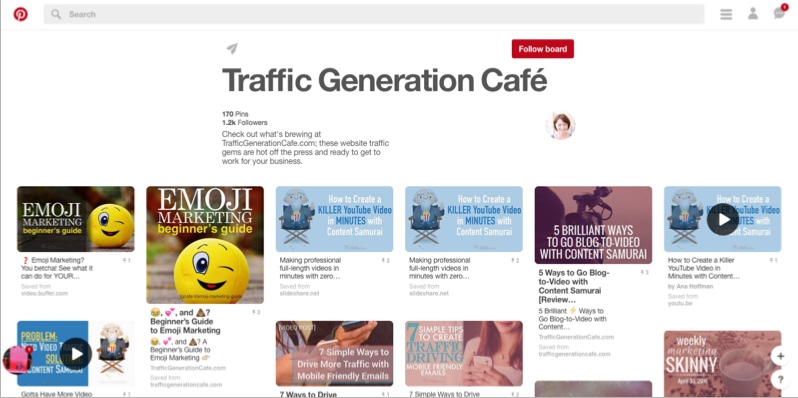
Apart from sharing the content yourself on Pinterest, you should also try and engage with other boards.
To find other boards to join where your content will be relevant, search for a keyword and then select related boards to check out:
Image Sources: Pinterest
24. Pinterest promoted pins
Pinterest offers “Promoted Pins” (similar to “Promoted Tweets” on Twitter).
Promoted pins are repinned on average 11 times per ad, which could mean some big exposure for your content, and are really easy to set up when you have a business account.
They look like this:

Image Source: Social Media Examiner
Most Pinterest advertising comes from eCommerce brands and consumer facing product businesses, but that doesn’t mean there isn’t an opportunity there for promoting your blog content.
Social Media Automation
91% of people who use marketing automation say it is “very important” to the success of their marketing across channels.
Social media automation is often the first place to start, and can help you get the most out of your social posts to drive traffic to your blog.
25. Buffer
Buffer is a social media automation tool that is free up until a certain limit. You can connect your Twitter, Facebook, LinkedIn, Pinterest and more, and schedule content to go out at opportune times.
If you have a business account the app provides some helpful analytics and insights into your audience. For example it has an optimal timing tool, that analyzes your social audience and decides the best times for posting to get the most reach:
Image Source: Buffer
The thing I love about Buffer is that you can pre-set times for your posts to go out, and then as you add content into the platform to share and hit “Add to Queue”, Buffer will automatically slot it into your next available time on the calendar.
This is especially good for doing automated social media outreach to influencers on Twitter because you can space out the messages and not come across too spammy.
26. Meet Edgar
Meet Edgar is my favorite social media automation tool with its own unique features.
On Buffer, your post queue goes empty and then you need to fill it up again to keep your automated posts going.
Meet Edgar, on the other hand, puts together a content library that will continue to re-share your content time and time again based on the schedule you choose. It’s amazing for evergreen content.
At any time you can check out your queue to see what is about to be shared next:
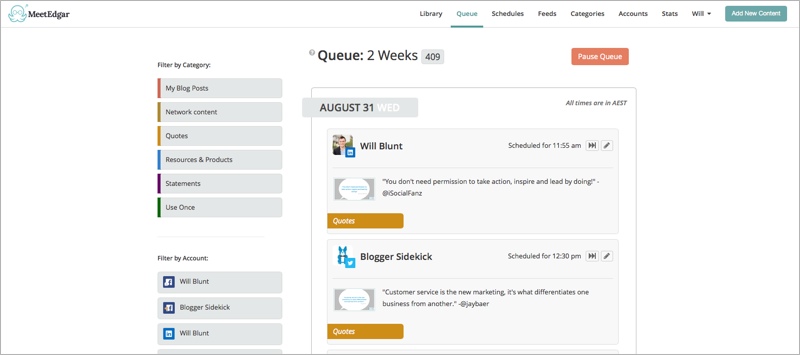
You can also create a unique posting schedule based on the kinds of updates you’re posting and when:
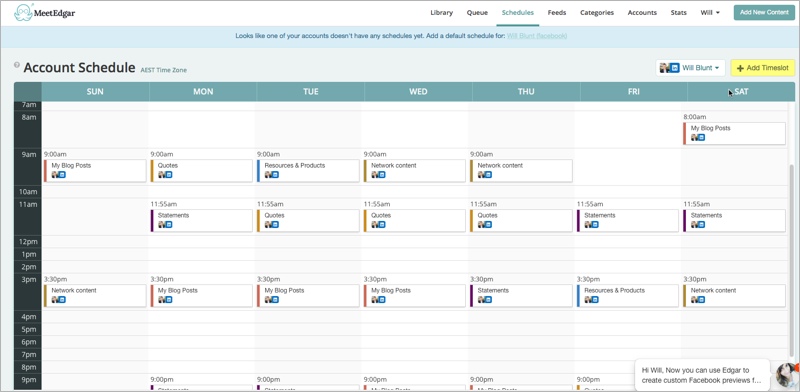
Images Sources: Meet Edgar
27. IFTTT
IFTTT is another tool you can use to automate your social media if you want to automate things across different channels simultaneously.
It puts together “recipes”, that you can also create yourself, of how to distribute your content (among other actions). So for example if you write a new blog post, you can have it automatically post to Twitter or Facebook:
You can also do cool stuff that will simplify your influencer research, such as building a Twitter list based on a certain hashtag:
Image Sources: IFTTT
Online Discussions
There are several discussions that are already active online about the topics you are writing about. Some you have created yourself such as your email community, and some that others have created such as forums.
You can tap into these active discussions to promote your blog.
28. Email broadcasts
If you put a lot of work into building an email list, then it just makes sense to promote your blog content to them when it goes live – they have already told you they care about what you have to say.
The first email you send out to promote your blog post should be really simple, with the primary goal being to drive more traffic to your blog post.
For example you could use the heading of your post for the subject line, the introduction of your post as a teaser within the email, and then one very clear call-to-action that links readers directly to the blog post on your site.
The key is to tell them why the post will interest them in as few words as possible, and then provide a link.
Below is an example from Adroll:
You could also send out an email newsletter that curates a series of posts, either yours or other leaders in your industry, and feature your blog posts in these.
Adroll does this as well for all their latest posts:
Image Sources: Adroll
29. Forums
Do you know of any online forums related to your niche?
They are are a great place to promote your blog content because they bring together a group of highly targeted people in the one place.
To find forums in your industry it’s as easy as using a Google search, by using a keyword + some common forum-related terms:
- Forum
- Vbulletin
- Board
But don’t just suggest your blog post to people straight away. Instead, engage with the conversation and offer a link if it truly does add relevant value.
You may also like to include a link to your latest blog post in the signature area of your forum profile. That way if you are a regular contributor people will check out your site.
30. Comments on other blogs
Commenting on other blogs (or even other blogs of your own) is another effective tactic for how to promote your blog content.
The key is to make sure you regularly engage on these blog comments, or risk making people angry when you go ahead and share a link back to your site.
Another tip for mentioning your own content on someone else’s blog is to ensure the content you’re linking to complements the piece you’re commenting on. Don’t suggest content on the exact same topic, or even worse on something totally unrelated.
Darren Rowse from ProBlogger flips this tactic on its side slightly by using the comments section of his OWN blog to promote other blog posts on the same site… Awesome idea!
Image Source: ProBlogger
31. Quora
Quora can be a valuable tool for promoting your blog content too.
Much like any online forum, to be successful at promoting your content on Quora you need to regularly contribute to the conversation and build a profile for yourself.
Start by finding and following topics related to your industry. Just type your keyword into their search field, then click on one of the relevant topics that comes up.
Click over to the “Feed” tab and see a list of questions related to your topic. The reason you are looking for relevant questions is because your blog post might be a valuable resource to answer these questions.
Image Sources: Quora
When you go to answer the questions, make sure you add a lot of value first, before linking back to your blog post.
For example, if someone had asked the question “how do I effectively promote a blog post?” on Quora. I could reply to that question with a quick fire summary of this blog post, and then let them know at the bottom that they can “Read more at this link…”
Buffer’s guide to using Quora for marketing is a must-read if you want to use it to promote your blog content: Beginner’s Guide to Quora: The Most Helpful Uses for Marketers
32. Yahoo Answers
Yahoo Answers might not be as popular as Quora, but it still gets a lot of traffic and is therefore a potential pitstop for more web traffic.
Have a look for categories that are related to your industry by starting with their main categories.
Once you find a main category that is relevant, you can drill down to more specific sub-categories and questions.
Image Sources: Yahoo Answers
In a similar approach to Quora, look for questions that your blog post would be able to answer and jump in the conversation with your valuable expert opinion.
33. Inbound.org
If you are in the digital marketing space, Inbound.org allows you to submit your latest content and get it in front of over 160 thousand potential marketers.
But you aren’t including your whole blog post, much like the email broadcast it is just a teaser with a link off to your website.
Here is an example of one of my shares:
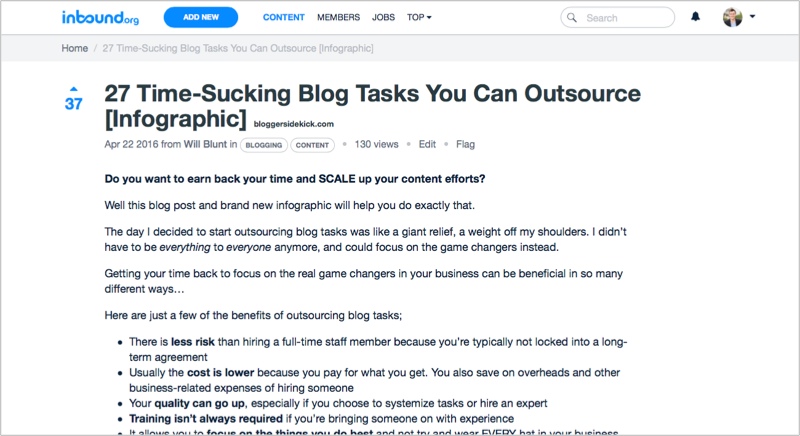
Image Source: Inbound.org
People will up-vote and comment on high quality content, with the most popular content making it to the top of their “Trending” stream.
34. Triberr
Triberr is a platform that can help connect individuals with content related to their interests.
When you join up, you’ll want to find at least one tribe related to your industry, which you can easily find by searching in the “Tribes” section of the navigation bar:
Image Source: Triberr
Most tribes have an acceptance process, that requires you to apply or at least tell them why you will bring value to the members. And the better tribes for promoting your content are sometimes challenging to get featured in. But once you find your way into a good tribe it can immediately impact your traffic as you leverage the networks of other tribe members to promote your content.
35. Growth Hackers
Growth Hackers is another content aggregation platform similar to Inbound.org where readers up vote and comment on the best content.
Here’s an example of a post I shared that got upward of 12,000 views:
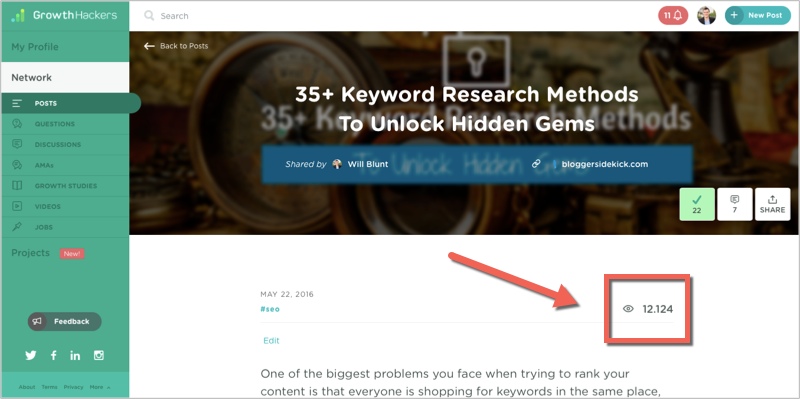
You can also go to their “Questions” section and click “Filter by tag” to find questions your blog post might be relevant to, and to engage with relevant community members:
Image Sources: Growth Hackers
36. Viral Content Bee
Viral Content Bee is a free community that allows you to promote your blog posts to other people who are looking for interesting content to share on their social media networks.
That said, it isn’t exactly “free”. You have to earn credits from sharing other people’s content, which you can then use for your own content promotion.
Image Source: Viral Content Bee
So if you’re willing to give generously and share other people’s content around on social media, you will get exposure to a potentially massive community of others.
37. CoPromote
CoPromote is a social media community that rewards you for sharing other people’s content, by depositing “reach” in your account. In a similar way to Viral Content Buzz.
This “reach” that you accrue is how you can effectively boost your blog content to the community.
You can sync CoPromote with your Twitter, Instagram, Tumblr, Vine and YouTube accounts to gain added exposure for your content.
The way it works is fairly simple… Someone in the community “Boosts” one of their social media shares, and you have the option to re-share that with your followers on the same social network. By doing so, you get points.
Then when it comes to you wanting to promote your own social media share, you use those points like money to buy the reach of other people in the community. If your content is interesting enough, people will re-share it and you will gain added attention for your content.
Here is an example of the type of engagement and reach you can get from CoPromote on Twitter without paying a cent:
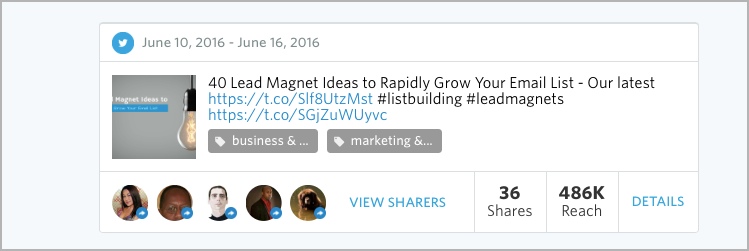
Image Source: CoPromote
Content Curation and Syndication
Several platforms and websites have been created with the sole purpose of curating the content of others. They are literally built to help you promote your content.
38. Blog syndication
There are plenty of websites out there willing to republish your blog content if it’s quality and offers value to their audience.
To make sure you don’t give up any of the SEO authority from your post, make sure it links back to the original one and uses canonical tags.
Some popular sites with a business focus that accept syndicated content include:
See the post below from Aaron Agius on Business2Community that was syndicated from Jeff Bullas’ blog:
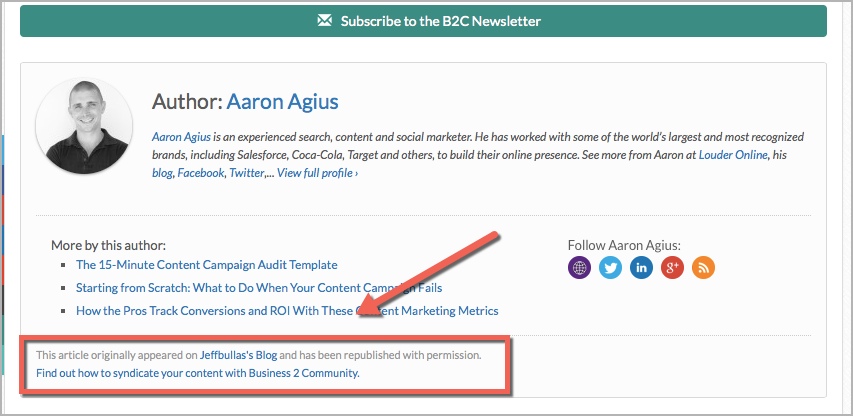
Image Source: Business2Community
39. SumoMe Discover
SumoMe Discover works in a similar way to Viral Content Buzz, except instead of sharing your content on social media, it displays it as recommendations on other websites. Under the banner “You may also like”.
This means that to be an active participant and have your blog posts shared to other websites, your website needs to display other users’ content as well.
As a user you can build up a bank of credits based on how many people actually click on the suggested links at the bottom of your blog posts. The more credits you have the more exposure your content gets on their network.
Image Sources: SumoMe
So if you’re happy to advertise other people’s content on your site for free, it can be a unique way to access a new audience.
40. Scoop.it
Scoop.it is kind of like an online magazine for curating content. You can create pages of your own that share and curate content about specific topics, and you can also monitor and engage with other people’s pages.
What I find really helpful from a blog promotion perspective is that you can actually recommend your content to other pages on the platform if you find the right ones.
To share your content with other pages all you need to do is find a relevant page in your industry that accepts recommendations, and then copy and paste your blog URL into the suggest bar:
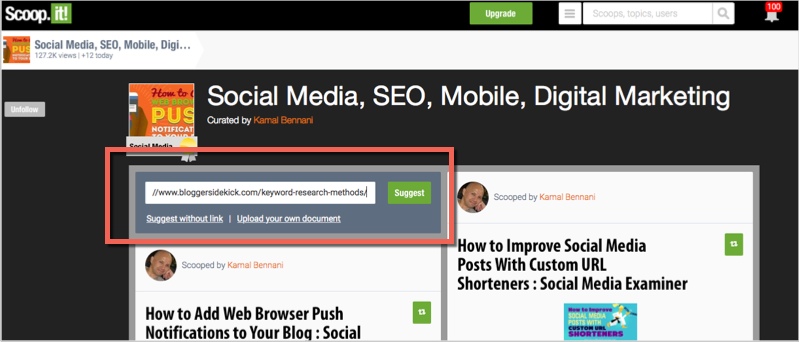
Image Source: Scoop.it
41. StumbleUpon
To get more buzz for your blog content using StumbleUpon, you’ll need to build a following and curate content regularly.
Start by following others with similar interests and engaging with the content they share:
You can also add a StumbleUpon badge to your blog to encourage people to push your content across to the platform.
Image Sources: StumbleUpon
42. StumbleUpon’s paid discovery
If your content isn’t getting enough traction organically, you might consider paid promotion on StumbleUpon.
There ad platform lets you target audiences by age, gender, location, devices and interests, and there are a variety of pricing plans.
With this form of advertising your content is the ad, and they offer full-page native advertising options.
Image Source: StumbleUpon
Find out more about StumbleUpon ads here.
43. AllTop
AllTop is a content aggregator site that works for almost any blog niche with listings across a wide range of categories:
Image Source: AllTop
You can submit sites (like your own) for consideration after creating an account, and have it listed for people to discover on their platform.
Whilst you won’t see a huge up-tick in blog traffic from a site like this, it’s a good way to be present in as many places as possible.
Repurposing Content
One way to get the most out of the effort you put into creating blog content is to repurpose it into different formats. It’s also a great way to promote your content to an audience that frequents different platforms or likes to consume information through a different medium.
Let’s take a look at some ways you can repurpose your content to get it in front of more people…
44. Slide decks
You can easily create a slide deck out of your content using PowerPoint or a similar tool, and then upload it to SlideShare to get more visibility.
Make sure you fill out your website and connect your social profiles to encourage sharing from SlideShare, and drive traffic back to your site:
Choose the categories you publish it in carefully and make sure your slide deck description has important keywords so people can find it easily in search:
Image Sources: SlideShare
45. Video
It’s estimated that companies that use videos get 41% more web traffic from search engines.
If you turn your blog post into a video it gives you access to a completely new audience of people who are searching for, and engaging with that style of content.
There are a lot of tools that make this possible, like:
Wibbitz for example, is designed specifically for turning blog posts into videos:
Image Source: Wibbitz
Once you’ve created your video, you can extend your reach by submitting it to video hosting and sharing sites:
46. PDF/Document sharing
By turning your blog post into a PDF document, you can share it on PDF/Document sharing sites to get more exposure.
Printfriendly offer a service that makes this really easy to do. Just enter your post URL into the field provided, like this:
Then it’s ready to go as a PDF version:
Image Sources: Printfriendly
47. Podcasts
Podcasts are a hot topic at the moment, and have been for a while now. Everyone seems to be turning their blog into a blog/podcast hybrid and using the audio platform to interact with influencers and grow their audience.
If you are considering using podcasting to expand your reach and influence, one of the easiest ways to create content is to repurpose your blog posts. It is also a great way to get more attention for the original blog post by mentioning a link back to it in the show notes or on the episode.
Once you have the podcast ready to go, feature it on your website, and submit it to podcast sites like this:
48. Infographics
An infographic is 30 times more likely to be read than a pure text-based article. So if you have some data driven content, you can make it visually appealing by turning it into an infographic and re-kindling its sharing potential.
For example, the blog post that has the most shares here on Blogger Sidekick is about blog outsourcing, and is accompanied by an infographic summarizing the key points:
Here are some infographic creation tools you may like to check out:
Influencer Outreach
92 percent of people trust recommendations from individuals over brands, whether they know the person or not.
This is why influencer marketing is a growing trend in online marketing and an essential part of your blog promotion strategy.
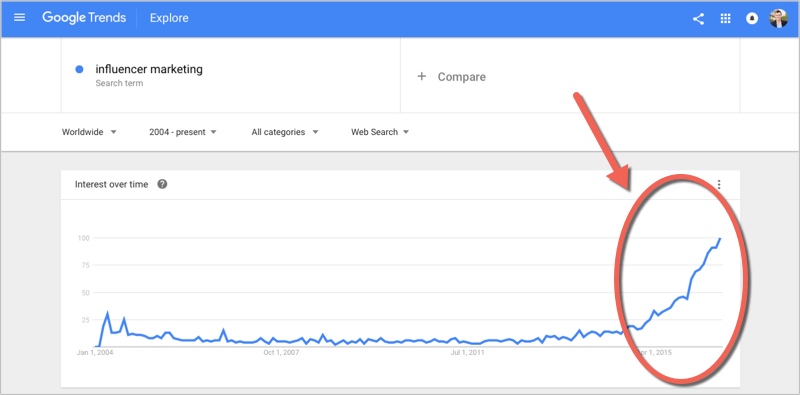
Image Source: Google Trends
49. Email outreach
This tactic for how to promote your blog can be seriously time consuming.
You are finding people that you can contact – like commenters, influencers and potential back linkers… and then you are physically outreaching to them over email to ask them to help promote your blog post.
The tool I use to do email outreach at scale is called Ninja Outreach. But there are other alternatives such as YesWare for Gmail and BuzzStream that serve a similar purpose.
Essentially you just want somewhere you can create an email template that will populate automatically with the information you have gathered and stored in your system.
For more advice on conducting blogger outreach check out this post: Everything You Need To Know About Blogger Outreach
50. Link roundup outreach
Getting high quality backlinks pointed to your site is another important search engine ranking factor, which is why you need to be thinking about it when you want to get more people seeing your content.
For example, 77.8% of top search results have at least one external backlink.
A great way to encourage others to link to your content is to outreach to people who put together link roundups on their own site.
Find other bloggers or authors who are creating roundup posts related to your industry like this:
Build a relationship with them by commenting on their blog posts, sharing their content on social media, guest posting on their blog, reviewing their products – anything you can think of.
Once you have a strong relationship with them, you’re in a position to end up on one of their roundup posts.
51. Quotes from experts and influencers
If you mention experts or brands in your blog post, and then reach out to them after publishing, they’ll often be happy to share the post around on social media. This gives you access to their whole social following.
You can simply send them an email letting them know when the post is live, with links to share the content in your email. Or if you don’t have an email address, Twitter is a great platform for connecting.
A cool little hack on Twitter is to share an image and tag people in the image, Twitter lets you tag up to 10 other accounts for example:
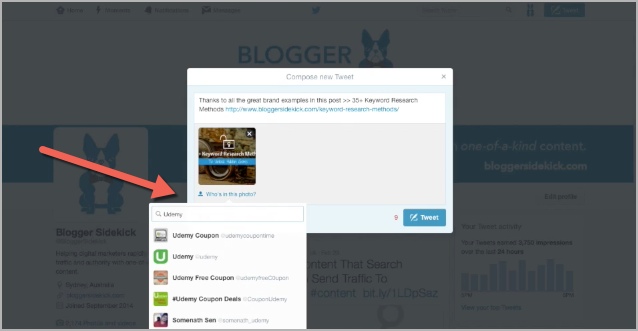
Image Source: Twitter
52. Similar sharers
You can broaden your influencer network by finding social sharers who have shared content on a similar topic in the past.
This is easy to do with Buzzsumo using their search bar:
Then clicking the “Influencers” tab to see who’s shared similar content. You can export the results, or sort them by domain authority, number of followers, and other factors:
Image Sources: Buzzsumo
53. Similar linkers
Other people, or influencers, that have proven to show interest in your chosen topic are those that have linked to similar articles in the past. The best thing about these people is that they could potentially link to your post as well.
To find these influencers, drop your keyword or topic into a Google search and use a tool such as Google Search Scraper to extract all the relevant search results for that term.
Image Source: Labnol.org
Once you have a list of all the articles on your chosen topic, plug those sites into a tool like Ahrefs, Open Site Explorer or BuzzSumo one by one to discover who has linked to each of the articles in the past:
Image Source: Moz
Do some digging and capture the contact information of these people so you can get in touch with them about your blog post.
Other Paid Promotion
There are other paid promotion options besides social media that can help your post get more exposure, let’s take a look at some.
54. Outbrain
Outbrain works with a worldwide publisher network that can distribute your content on websites such as Fairfax Media, Mashable and CNN.
Image Source: Outbrain
With Outbrain you are paying per click, with a minimum budget of $10 a day, and average click rates costing somewhere between $0.50 to $1.50 depending on the sites.
One cool thing about Outbrain is that it also has some basic testing and conversion tools to help optimize your efforts.
All you need to do is use a unique tracking pixel for your campaign and you will be able see conversions on the Outbrain Dashboard:
Image Source: Outbrain
55. Taboola
Taboola is an alternative to Outbrain. They distribute content in a similar way but on different websites.
Image Source: Taboola
Just like Outbrain they also use a cost-per-click system, which ranges from $0.25 – $0.35 for their top 30 sites.
If you want a more in-depth comparison of the two, I’d recommend checking out this article from Moz – The ROI of Content Distribution Networks: Outbrain vs Taboola
56. Quuu
Quuu works a little differently. It is a social media “sharing” community where they promote your content on Facebook, Twitter and LinkedIn by sending it out to influencers who use their free service.
They do this by doubling as a social media automation tool. They curate content that certain audiences are interested in, and send the suggestions to their users’ Buffer app.
If you want some of this curated content to be your blog posts, you can get in the their queue by paying for promotion.
Image Source: Quuu
Depending on your industry the pricing is actually quite affordable, ranging from $10 to $30 per piece of content to be promoted for a whole month. The price varies by industry because there are different levels of influencers or sharers within each industry, determining the reach and competition for your content.
One thing about Quuu that helps it stand out is they don’t accept just any old content. It has to be hand-picked and approved by their admin to make it into the system.
Conclusion
Let’s not get silly, if you were to use EVERY single one of these tactics every time you hit publish it would take a LONG time. And it’s questionable whether there would be any significant value added after a certain time.
I’m a big fan of the pareto principle… 80% of your results are most likely coming from 20% of your efforts.
Effective content promotion is about picking your best 20% and doubling down on it.
There’s nothing fancy about it all… In fact, content promotion is a bit like old school cold calling, but online marketers have tied it up in a nice bow and made it look nice.
To come out on top you need to know where to expend your energy, and you need to get your hands dirty. (Or pay someone else to get their hands dirty for you)
What blog promotion tactics are you using that are getting the BEST results?

